One model called the “Stock-to-Flow” enables valuation of different asset classes such as Gold, Silver or Bitcoin based on scarcity. According to this model, Bitcoin is on its way to $100,000.
Introduction
Satoshi Nakamoto published the bitcoin white paper on the 31st of October 2008, created the bitcoin genesis block on the 3rd of January 2009, and released the bitcoin code on the 8th of January 2009. At the time of our writing, the Bitcoin is trading above $15,000 and has a market capitalization of roughly $200bn.
Despite (or because) of its parabolic rise, Bitcoin remains highly controversial with a vast majority of investors still ignoring it as an asset class. Is Bitcoin massively overvalued with the risk of coming back to zero, as some of the most pessimistic pretend? Or does Bitcoin has even more upside potential due to its scarcity?
What is Scarcity?
Dictionaries usually define scarcity as 'a situation in which something is not easy to find or get', and 'a lack of something'. This is precisely what antiques and gold have in common: they have an unforgeable scarcity due to the costliness of their creation.
Bitcoin is the first digital object that cannot be copied, duplicated, hacked or forged. When the Bitcoin was launched in 2009, its developer(s) stipulated in the protocol that the supply of tokens would be capped at 21 million. To give some context, the current supply of bitcoin is around 18 million, the rate at which Bitcoin is released decreases by half roughly every four years (“the laving”), and the supply should get past 19 million in the year 2022.
Halving events will continue taking place until the reward for miners reaches 0 BTC. The last Bitcoin to be mined into existence is expected to be mined in the year 2140. It will be the 21 million'th Bitcoin to come into existence, but also the last, after which it will be impossible to create any more. From then on, Bitcoin will become truly 'deflationary', since "printing" / "minting" / "mining" new coins will no longer be possible, and if owners keep on losing their private keys, as they currently are, then the supply would further deflate by that lost-keys ratio.
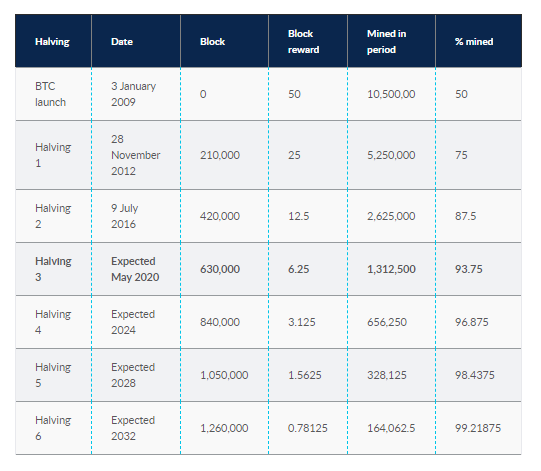
Bitcoin is thus be the first scarce digital object the world has ever seen. It is scarce like silver and gold, and can be sent over the internet, radio, satellite etc. This digital scarcity must have some value. But the big question is: how much?
The Stock-to-Flow model
In simple terms, the Stock to Flow (SF) model is a way to measure the abundance of a particular resource. It is the amount of a resource held in reserves divided by the amount it is produced annually.
The SF model is generally applied to natural resources. Let’s take the example of gold. While estimates may vary, the World Gold Council gauges that around 190,000 tons of gold have been mined since the dawn of mankind. This amount (i.e., the total supply) is what we can refer to as the stock. Meanwhile, there is around 3,200 tons of gold mined each year. This amount is what we can refer to as the flow.
But what does it actually mean? It essentially shows how much supply enters the market each year for a given resource relative to the total supply. The higher the Stock to Flow ratio, the less new supply enters the market relative to the total supply. As such, an asset with a higher Stock to Flow ratio should, in theory, retain its value well over the long-term.
In contrast, consumable goods and industrial commodities will typically have a low Stock to Flow ratio. Why is that? Since their value typically comes from them being destroyed or consumed, the inventories (the stock) are usually only there to cover demand. These resources don’t necessarily have high value as possessions, so they tend to work poorly as investment assets. In some exceptional cases, the price might rise quickly if there’s an anticipation of shortage in the future, but otherwise, production keeps up with demand.
It’s important to note that scarcity alone doesn’t necessarily mean that a resource should be valuable. Gold, for example, isn’t all that rare – after all, there are 190,000 tons available! The Stock to Flow ratio suggests that it’s valuable because annual production compared to the existing stock is relatively small and constant.
Let’s look at some Stock-to-Flow ratios for some “scarce” commodities
We can calculate the Stock to Flow ratio using these two metrics.
Stock-to-Flow = stock / flow
Where:
The “stock” is the size of the existing stockpiles or reserves.
The “flow” is the yearly production. Instead of SF, people also use supply growth rate (flow/stock). Note that SF = 1 / supply growth rate.
Historically, gold has had the highest Stock to Flow ratio out of precious metals. By dividing the total supply of 190,000 tons by 3,200, we get a Stock to Flow ratio of ~59. This tells us that at the current production rate, it would take around 59 years to mine 190,000 tons of gold.
Silver is second with SF 22. This high SF makes them monetary goods.
Palladium, platinum and all other commodities have SF barely higher than 1. Existing stock is usually equal or lower than yearly production, making production a very important factor. It is almost impossible for commodities to get a higher SF, because as soon as somebody hoards them, price rises, production rises, and price falls again. It is very hard to escape this trap.

Stock to Flow and Bitcoin
If you understand how Bitcoin works, it won’t be difficult for you to understand why applying the Stock to Flow model to it might make sense. The model essentially treats bitcoins comparably to scarce commodities, like gold or silver.
As mentioned earlier, Bitcoin is scarce, relatively costly to produce, and its maximum supply is capped at 21 million coins (see chart below). Also, Bitcoin’s supply issuance is defined on the protocol level, which makes the flow completely predictable. Through the Bitcoin halving process, the amount of new supply entering the system is halved every 210,000 blocks (roughly four years).
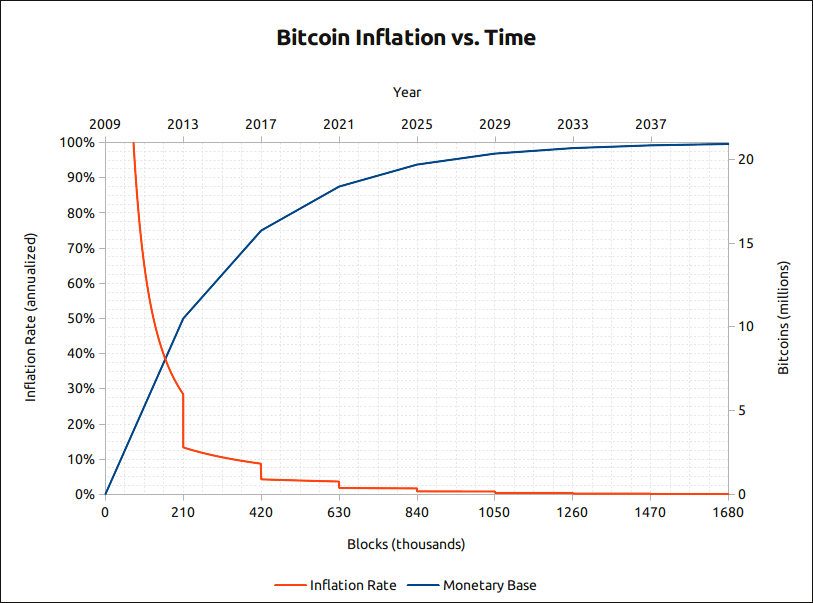
Bitcoin currently has a stock of around 18,500,000 coins and flow of 0.33 million / year. As such, the SF is 55.9. Before the last halving, Bitcoin SF was 25. A few years ago, it was much lower. But in the years to come, it will be much higher. As shown on the chart below, bitcoin is already in the monetary goods category like silver and gold. But it is expected to become over time a much scarcer resource than both Silver and Gold in a near future.
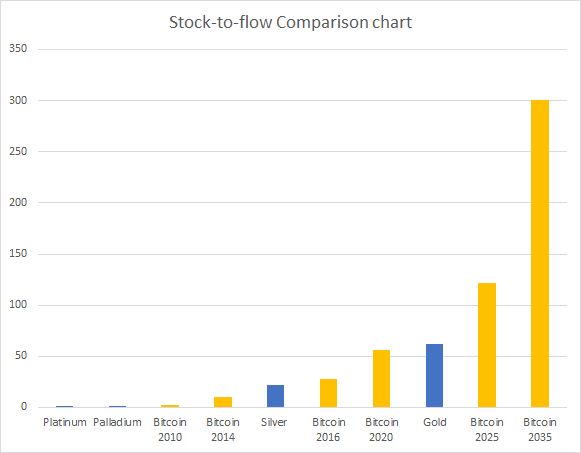
Stock-to-Flow and Value
The hypothesis in the study by Dutch institutional investor Plan B is that scarcity, as measured by SF, directly drives value. A quick glance at the table above confirms that market values tend to be higher when SF is higher. The next step for Plan B was then to collect data on Gold, Silver and Bitcoin and to build a statistical model.
Fitting a linear regression to the data confirms what can be seen with the naked eye on the chart below, courtesy of Bayern LB Research: a statistically significant relationship between SF and market value with a R2 of 95%. In simple terms, the likelihood that the relationship between SF and market value is caused by chance is close to zero, i.e the dominant driving factor seems to be scarcity / SF.
What is very interesting is that gold and silver, which are totally different markets, are in line with the bitcoin model values for SF. This gives extra confidence in the model. Note that at the peak of the bull market in Dec 2017 bitcoin SF was 22 and bitcoin market value was $230bn, very close to silver.
As shown on the chart, the value of SF for Bitcoin varies over time and so does its value, i.e the higher the SF, the higher of Bitcoin.
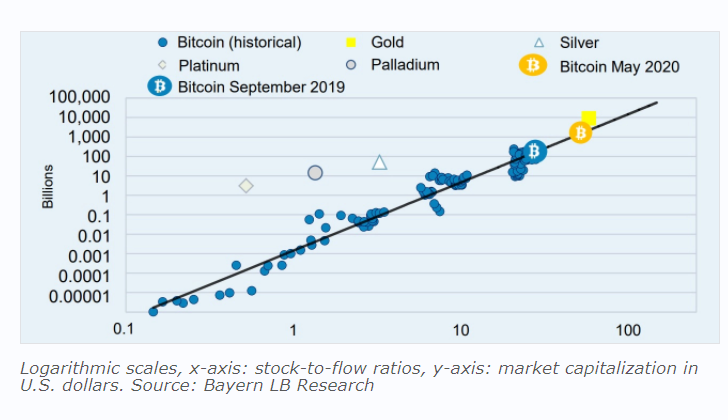
In the chart below (Source; lookintobitcoin.com), you can see the historical relationship of the 365-day moving average of Bitcoin’s Stock to Flow with its price. How far we are from next halving is indicated by colors (see legend of the the vertical axis). To assess where the Bitcoin should be trading as of now and in the future, the 365 days average Stock-to-Flow line can be used.
The predicted market value for bitcoin after May 2020 halving is $1 trillion, which translates in a bitcoin price of $55,000. The model then predicts the Bitcoin value should then reach $100,000 by the end of 2021 (!).
Where all the money needed for $1 trillion or $2 trillion bitcoin market value would come from?
For the bitcoin bulls, it will come from silver, gold, countries with negative interest rate (Europe, Japan, US soon), countries with predatory governments (Venezuela, China, Iran, Turkey etc.), billionaires and millionaires hedging against quantitative easing (QE), and institutional investors discovering the best performing asset of last 10 years.
As we have seen recently, payment companies such as Square have been accumulating some bitcoins at a large scale. In Q1 2020, Square purchased $306mm in bitcoin, up 72% from Q4 2019. Square purchased almost a quarter of the total amount of bitcoin created in that quarter. That was before the block reward halving which occurred in May of this year. Under the assumption they were consuming the same number of bitcoins throughout Q2 as they were in Q1, Cash App would be buying around 40% of all newly-issued bitcoin.
Square competitor Paypal recently announced it would begin supporting cryptocurrencies for the first time, allowing any PayPal account holder to store, buy, and sell popular virtual currencies starting later this year. The announcement arguably makes PayPal the most significant company in the financial tech sector to adopt support for virtual currencies. According to Bloomberg, PayPal has more than 346 million active accounts, 26 million of which are merchants. PayPal also plans to extend support to its money-sending subsidiary Venmo and international markets starting early next year.
What will happen to the bitcoin price if more payment companies and/or institutional buyers start to accumulate bitcoins in the years to come while the number of bitcoins issued continues to shrink?
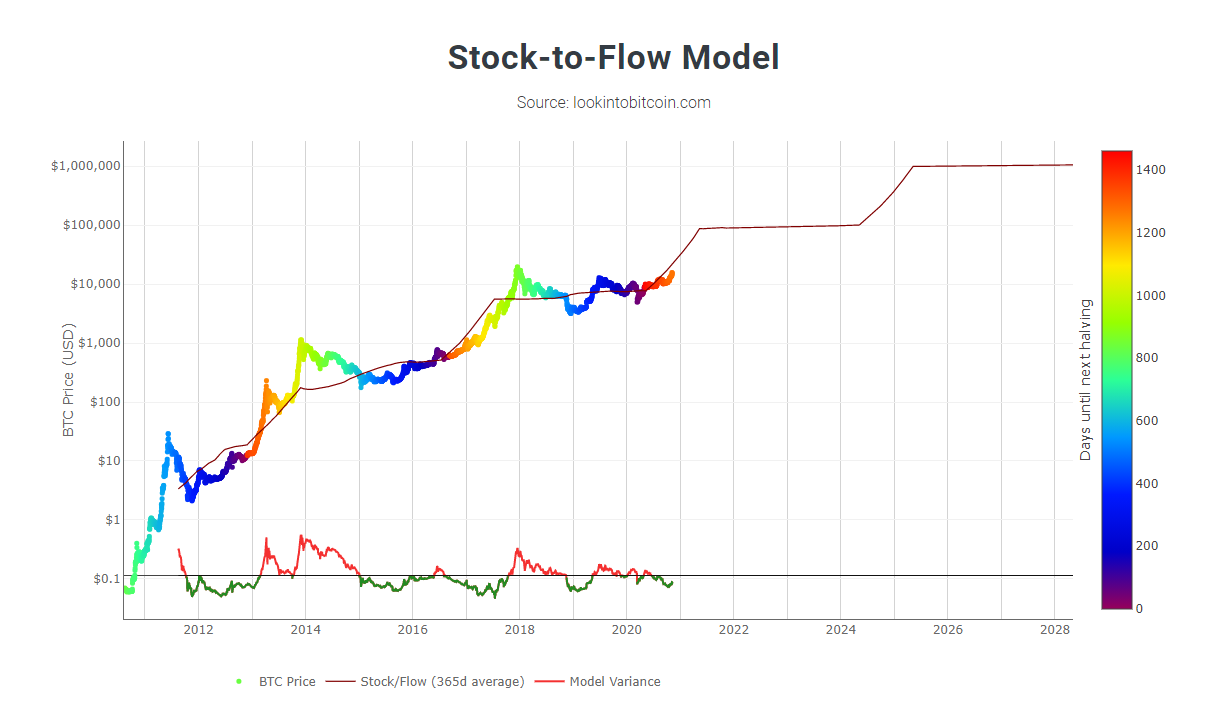
Limitations of the stock to flow model
For one thing, Stock to Flow relies on the assumption that scarcity, as measured by the model, should drive value. According to critics of Stock to Flow, this model fails if Bitcoin doesn't have any other useful qualities other than supply scarcity.
For others, correlation/cointegration is not causation. The price mostly following the model so far could be coincidence — other key factors not coming into play or canceling each other out.
There are also many potential events that would have a major impact on BTC/USD rate that aren’t accounted for in Stock to Flow. Some potential events would include: Bitcoin-specific critical vulnerability, Bitcoin outlawed by US/China/EU, massive selloff of a bitcoin whale, hack of major bitcoin custodian (Coinbase, etc.), etc.
Last but not least, the valuation of an asset requires taking into account its volatility. If the volatility is predictable to some extent, the valuation model may be more reliable. However, Bitcoin is notorious for its large price moves.
Final words
The Stock to Flow model measures the relationship between the currently available stock of a resource and its production rate. It’s typically applied to precious metals and other commodities, but some argue it may be applicable to Bitcoin as well.
In this sense, Bitcoin may be viewed as a scarce digital resource. According to the method of analysis presented above, the unique propositions of Bitcoin should make it an asset that retains its value over the long-term.
However, every model is as strong as its assumptions, and it may not be able to account for all aspects of Bitcoin valuation. What’s more, at the time of writing, Bitcoin has only been around for a little more than ten years. Some might argue that long-term valuation models like the Stock to Flow need a larger data set for more reliable accuracy.
Sources:
- Medium article: Modelling Bitcoin's Value With Scarcity
- www.lookintobitcoin.com
- Bayern LB Research





